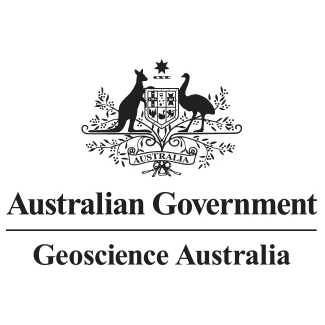Full description
1. Band ratio: B5/B7 Blue is well ordered kaolinite, Al-rich muscovite/illite, paragonite, pyrophyllite Red is Al-poor (Si-rich) muscovite (phengite)
useful for mapping: (1) exposed saprolite/saprock is often white mica or Al-smectite (warmer colours) whereas transported materials are often kaolin-rich (cooler colours); (2) clays developed over carbonates, especially Al-smectite (montmorillonite, beidellite) will produce middle to warmers colours. (2) stratigraphic mapping based on different clay-types; and (3) lithology-overprinting hydrothermal alteration, e.g. Si-rich and K-rich phengitic mica (warmer colours). Combine with Ferrous iron in MgOH and FeOH content products to look for evidence of overlapping/juxtaposed potassic metasomatism in ferromagnesian parents rocks (e.g. Archaean greenstone associated Au mineralisation) +/- associated distal propyllitic alteration (e.g. chlorite, amphibole).
Lineage
Maintenance and Update Frequency: notPlanned
Statement: For detailed product notes and history please see associated "NATIONAL ASTER MAP PRODUCT NOTES" More accurate mapping of land surface composition at a continental-scale for improved resource exploration is becoming possible through a new generation of remote sensing technologies. These include the multi-spectral Japanese ASTER sensor onboard the US TERRA satellite which was launched in December 1999 and has now collected an image archive that effectively covers the Earth's land surface three times over. ASTER calibration, processing and standardisation approaches have been produced as part of a large multi-agency project to facilitate uptake of these techniques and make them easily integrated with other datasets in a GIS. Collaborative research, undertaken by Geoscience Australia, the Commonwealth Scientific Research Organisation (CSIRO) and state and industry partners, on the world-class Mt Isa mineral province in Queensland was completed in 2008 as a test-case for these new methods. The project demonstrated that geochemical information about alteration chemistry associated with footprints of mineral systems can be acquired by analysing spectral ground response, particularly in short-wave infra-red. Key materials that can be identified include clays and magnesium/iron/ aluminium oxyhydroxides, as well as information on mineral composition, abundance and physicochemistry (including crystallinity) for minerals such as kaolinite, which can be used as a surrogate for identifying transported versus in situ regolith material. High resolution mineral maps, from instruments such as HyMap, and Hyperion allow the recognition of various types of hydrothermal alteration, and can map and distinguish between distinct geochemical and mineralogical alteration halos and fluid pathways. The techniques and applications applied in the Mount Isa program were extended into a similar study for the eastern Gawler and Curnamona Cratons in South Australia, and now into the National ASTER mosaic and maps of Australia, using Hyperion satellite data as a means to calibrate the lower resolution ASTER data The following is a summary of the ASTER image processing procedure: Details will be provided in related publications currently in preparation. 1. Acquisition of the required ASTER L1B radiance@sensor data with SWIR cross-talk correction applied (www.gds.aster.ersdac.or.jp). Note that ASTER L2 "surface radiance" or "surface reflectance" can also be used; 2. SWIR Cross-talk correction (ERSDAC GDS software); 3. Geometric correction; 4. Converting the three 15 m VNIR bands to 30 m pixel resolution; 5. Generating a single nine band VNIR-SWIR image file (L1B) for each ASTER scene; 6. Solar irradiance correction; 7. Masking clouds and green vegetation; 8. Generation of ERMapper headers; 9. Calculation of statistics for masked-image overlaps and global scene response; 10. Scene ordering (best scenes up front in the mosaic); 11. Application of gains and offsets to cross-calibrate all images to a global response; 12. Reduction to "surface" reflectance using independent validation data (e.g. satellite Hyperion data). This requires selecting overlapping "regions of interest" (ROI) and calculating statistics to generate regression coefficients (gains and offsets). Alternatively, if independent EO data are not available then an estimate of the additive component (Equations 1 and 2) can be measured using a "dark-pixel" approach. The "dark pixel" can be estimated using: (1) deep water (very effective for SWIR bands away from sun glint angle); or (2) extrapolation to the dark-point using at least different materials illuminated under a range of different topographic conditions; 13. Application of the correction data (offset +/- gain for each band per scene/mosaic); 14. Geoscience information extraction: Application of "normalisation" scripts (see Tables 1 and 2 for product details);
![]()
![]()
![]()


